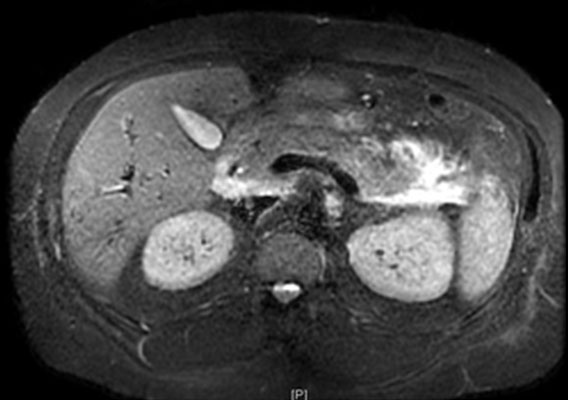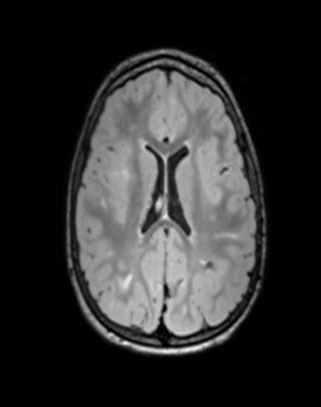 |
Case Report
Polymyxin B hemoperfusion therapy and extracorporeal CO2 removal in a patient with COVID-19: A case report
1 Physician Anesthesiology, Critical Care and Intensive Care Unit, D. Cotugno Hospital, Naples, Italy
2 Hospital Health Direction, Infectious Disease Unit, A. Cardarelli Hospital, Naples, Italy
3 CPSI Anesthesiology, Critical Care and Intensive Care Unit, D. Cotugno Hospital, Naples, Italy
4 Anesthesiology, Director Critical Care and Intensive Care Unit, D. Cotugno Hospital, Naples, Italy
Address correspondence to:
Monastra Luca
San Sebastiano al Vesuvio, Via Cianciulli 31, 80040 NA,
Italy
Message to Corresponding Author
Article ID: 100093Z06ML2021
Access full text article on other devices

Access PDF of article on other devices

How to cite this article
Luca M, Alessandro P, Raffaele G, Fiorentino F. Polymyxin B hemoperfusion therapy and extracorporeal CO2 removal in a patient with COVID-19: A case report. Case Rep Int 2021;10:100093Z06ML2021.ABSTRACT
Introduction: In December 2019, an outbreak of pneumonia caused by a novel coronavirus, severe acute respiratory syndrome coronavirus 2 (SARS-CoV-2) quickly spread and the corona virus disease 2019 (COVID-19) became a pandemic. We report on a 54-year-old patient with SARS-CoV-2 infection suffering from septic shock due to nosocomial infection and pulmonary derangement caused by SARS-CoV-2. The patient was treated with polymyxin B hemoperfusion (PMX-HP), a blood purification therapy against septic shock, followed by continuous low flow extracorporeal CO2 removal therapy.
Case Report: A 54-year-old man was hospitalized for coronavirus disease 2019 (COVID-19). Chest computed tomography (CCT) showed extensive non-segmental ground glass opacity. Despite the initiation of standard therapy, respiratory failure progressed. After two days of polymyxin B hemoperfusion therapy (PMX-HP) with adjunctive corticosteroid for multi-resistant Gram-negative infection (Acinetobacter) the patient’s condition improved. In rapidly progressive COVID-19 cases with secondary infection, the early use of PMX-HP may avoid the need for mechanical ventilation by suppressing local inflammation of the lung.
Conclusion: The concern of life-threatening bacterial infections in critically ill COVID-19 patients due to antibiotics resistance is high. Secondary bacterial infections may develop during or following COVID-19 infection. The use of PMX-HP in septic shock patients has resulted in decreased dependency on ventilators, which is a serious issue during this COVID-19 pandemic. Combined and less invasive approaches might be considered in COVID-19 patients with multiple organ failure (MOF).
Keywords: Acute respiratory distress syndrome, Coronavirus disease 19, Extracorporeal CO2 removal, Hemoperfusion, Polymyxin B, Septic shock, Severe acute respiratory syndrome coronavirus 2
INTRODUCTION
A novel coronavirus, SARS-CoV-2, emerged in December 2019 in Wuhan, China. The coronavirus disease, COVID-19, became a pandemic and a major challenge to healthcare systems worldwide. Patients who are infected with SARS-CoV-2 may present with a wide range of clinical manifestations from mild to moderate or severe illness. Severe cases may include severe pneumonia, acute respiratory failure, acute respiratory distress syndrome (ARDS), acute kidney injury, endothelial damage, coagulopathy, sepsis, and septic shock [1],[2],[3]. Pneumonia is the most common complication in COVID-19 patients. In severe cases this may be accompanied by a dysregulated immune response. Up to 60% of COVID-19 patients have gastrointestinal symptoms at admission or developed during hospitalization [4]. Gastrointestinal dysfunction may lead to increased mucosal permeability and leakage of endotoxin. Patients who are hospitalized for extended periods in an intensive care unit (ICU) are more prone to superimposed infections [5]. Gram-negative infection and/or direct mucosal gut translocation lead to the circulation of endotoxin (endotoxemia) [6].
We report a case of COVID-19 complicated with ARDS and septic shock treated with polymyxin B hemoperfusion and extracorporeal CO2 removal.
CASE REPORT
A 54-year-old man with a medical history of obesity and hypertension developed fever, cough, and diarrhea. After five days of gradual worsening he was brought to the hospital by ambulance. At the emergency department he presented with fever and severe respiratory failure. Blood samples were drawn. Arterial blood gas analysis revealed a PO2/FiO2 of 63. The patient was asthenic and dyspneic and was immediately intubated (rapid sequence intubation) and transferred to the ICU. A swab test for SARS-CoV-2 infection resulted positive.
Tocilizumab (1–8 mL/kg) and antibiotics (meropenem, tigecycline, colistin) therapy were initiated. Intermittent positive pressure ventilation (IPPV) with a tidal volume of 6 mL/kg, positive endexpiratory pressure (PEEP) 10 cm H2O, Ppeak 31 mmHg, an average compliance of 40, average driving pressure of 11 mmHg, FiO2 100 to achieve a SpO2 of at least 95%. Various cycles of pronation were performed without notable effect and PO2/FiO2 remained Figure 1A). Blood cultures resulted positive for multi-resistant Gram-negative infection (Acinetobacter).
The patient’s clinical condition did not improve over the following days and septic shock was diagnosed. Endotoxin activity assay (EAA) was 0.92 EU. We therefore decided to initiate polymyxin B hemoperfusion therapy (medical device Toraymyxin, Toray Medical, Japan). Two sessions of PMX-HP, two hours each, were performed within 24 hours. During the following five days the patient’s clinical condition improved, EAA decreased from 0.92 to 0.62 EU, procalcitonin decreased from 3.6 to 2.9 ng/mL, C-reactive protein (CRP) decreased from 32.2 to 23.0 ng/mL, IL-6 decreased from 43.6 to 16.9 pg/mL. Hemodynamic parameters also improved; mean arterial pressure (MAP) increased from 60 to 77 mmHg and noradrenaline was suspended.
However, a week later the patient’s conditions deteriorated. The second CCT scan showed a tendency of consolidation of bilateral pleural effusion (Figure 1B). The patient became hypercapnic and in order to facilitate ultraprotective ventilation, extracorporeal CO2 removal therapy was initiated. Extracorporeal CO2 removal (ECCO2R) was continued for six days. The partial pressure of carbon dioxide (PaCO2) improved from 74 mmHg at baseline to 42 mmHg on the 7th day and pH increased from 7.17 to 7.41. The final CCT scan revealed a net reduction of ground glass opacities and pleural effusion (Figure 1C).
The patient was hospitalized in the ICU for 113 days and was then admitted to a rehabilitation facility.
DISCUSSION
In this case report, we have presented a case of COVID-19 complicated with septic shock and ARDS. COVID-19 infection may lead to nosocomial infection potentially resulting in a long-term hospitalization and cause a worsening of the outcomes. In this case report, with a focus on a septic shock as secondary infection of the lower respiratory tract of a COVID-19 patient, Acinetobacter baumannii was the most common organism. In recent years, this species has become resistant to many types of antibiotics and they are responsible for the spread of septic shock [7],[8]. This clinical condition delays the process of treatment and recovery of COVID-19 patients but also increases the mortality rate.
Our local strategy is to identify as early as possible the outbreak of septic shock drugs using a combination therapy according to the pattern of antibiotic resistance. According to guidelines we routinely and as fast as possible try to perform polymyxin B hemoperfusion therapy to ease the cytokine storm, monitoring the endotoxin activity. In this study, combination therapy with meropenem and colistin was used for the treatment of infections caused by the resistant strains of Acinetobacter. Mechanical ventilation seems to be a key factor in the COVID-19 patient outcome, we are observing a progressive deterioration of blood gases exchange. Among several supportive measures including low tidal volume ventilation in those with H-type-COVID-19-pneumonia as proposed by Gattinoni et al. [9]. Prone positioning and inhaled vasodilators, extracorporeal lung assist is the most limited resource in the treatment of ARDS. Extracorporeal membrane oxygenation (ECMO) is not generally recommended in severe ARDS. Several other options of extracorporeal support are of interest. Among those options is low blood flow extracorporeal CO2-removal (ECCO2R), and feasibility of ultra-protective ventilation we used (tidal volume 3 mL/kg instead of 6 mL/kg predicted bodyweight) as well as combination with continuous renal replacement therapy. Extracorporeal CO2 removal (ECCO2R) at lower blood flows in combination with very low tidal volume ventilation could be a therapeutic option.
CONCLUSION
The concern of life-threatening bacterial infections in COVID-19 ICU patients due to antibiotic resistance is high. Secondary bacterial infections may develop during or following COVID-19 infection. It is important to limit infection at an early stage and the use of PMX-HP in COVID-19 patients with septic shock may be useful. Endotoxin is the primary driver of the septic cascade and there is reliable evidence that removing endotoxin by PMX-HP reduces circulating levels of cytokines and other inflammatory mediators. The use of PMX-HP in septic shock patients has resulted in decreased dependency of ventilators, which is a serious issue during this COVID-19 pandemic. In addition, our preliminary experience reveals that CO2 removal could play a role in the stabilization and survival of selected critically ill patients with COVID-19. Additional gathering and analysis of data will inform appropriate selection of patients and provide guidance as to the best use of CO2 removal in terms of timing, implementation, duration of support, and best criteria for discontinuation when treating patients with COVID-19.
REFERENCE
1.
Fanelli V, Fiorentino M, Cantaluppi V, et al. Acute kidney injury in SARS-CoV-2 infected patients. Crit Care 2020 Apr;24(1):155. [CrossRef]
[Pubmed]

2.
Huang C, Wang Y, Li X, et al. Clinical features of patients infected with 2019 novel coronavirus in Wuhan, China. Lancet 2020;395(10223):497–506. [CrossRef]
[Pubmed]

3.
Klok FA, Kruip MJHA, van der Meer NJM, et al. Incidence of thrombotic complications in critically ill ICU patients with COVID-19. Thromb Res 2020;191:145–7. [CrossRef]
[Pubmed]

4.
Lin L, Jiang X, Zhang Z, et al. Gastrointestinal symptoms of 95 cases with SARS-CoV-2 infection. Gut 2020;69(6):997–1001. [CrossRef]
[Pubmed]

5.
Ronco C, Reis T. Kidney involvement in COVID-19 and rationale for extracorporeal therapies. Nat Rev Nephrol 2020;16(6):308–10. [CrossRef]
[Pubmed]

6.
Fink MP, Delude RL. Epithelial barrier dysfunction: A unifying theme to explain the pathogenesis of multiple organ dysfunction at the cellular level. Crit Care Clin 2005;21(2):177–96. [CrossRef]
[Pubmed]

7.
Paczosa MK, Mecsas J. Klebsiella pneumoniae: Going on the Offense with a strong defense. Microbiol Mol Biol Rev 2016;80(3):629–61. [CrossRef]
[Pubmed]

8.
Sampedro GR, Bubeck Wardenburg J. Staphylococcus aureus in the intensive care unit: Are these golden grapes ripe for a new approach? J Infect Dis 2017;215(suppl_1):S64–70. [CrossRef]
[Pubmed]

9.
Gattinoni L, Chiumello D, Caironi P, et al. COVID-19 pneumonia: Different respiratory treatments for different phenotypes? Intensive Care Med 2020;46(6):1099–102. [CrossRef]
[Pubmed]

SUPPORTING INFORMATION
Author Contributions
Monastra Luca - Conception of the work, Design of the work, Drafting the work, Final approval of the version to be published, Agree to be accountable for all aspects of the work in ensuring that questions related to the accuracy or integrity of any part of the work are appropriately investigated and resolved.
Perrella Alessandro - Drafting the work, Revising the work critically for important intellectual content, Final approval of the version to be published, Agree to be accountable for all aspects of the work in ensuring that questions related to the accuracy or integrity of any part of the work are appropriately investigated and resolved.
Garzia Raffaele - Acquisition of data, Analysis of data, Drafting the work, Final approval of the version to be published, Agree to be accountable for all aspects of the work in ensuring that questions related to the accuracy or integrity of any part of the work are appropriately investigated and resolved.
Fraganza Fiorentino - Conception of the work, Design of the work, Revising the work critically for important intellectual content, Final approval of the version to be published, Agree to be accountable for all aspects of the work in ensuring that questions related to the accuracy or integrity of any part of the work are appropriately investigated and resolved.
Guarantor of SubmissionThe corresponding author is the guarantor of submission.
Source of SupportNone
Consent StatementWritten informed consent was obtained from the patient for publication of this article.
Data AvailabilityAll relevant data are within the paper and its Supporting Information files.
Conflict of InterestAuthors declare no conflict of interest.
Copyright© 2021 Monastra Luca et al. This article is distributed under the terms of Creative Commons Attribution License which permits unrestricted use, distribution and reproduction in any medium provided the original author(s) and original publisher are properly credited. Please see the copyright policy on the journal website for more information.






